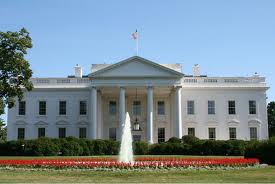 Mark Twain said once that The White House was the “best Congress money can buy.” In this battered economy, while millions of Americans are tightnening their belts, this presidential election is expected to be the priciest in U.S. history. Make a guess: how much do you think it will cost? The predictions by the Center of Response Politics (CRS), a nonpartisan research group tracking money in politics, are of almost $6bn.
Mark Twain said once that The White House was the “best Congress money can buy.” In this battered economy, while millions of Americans are tightnening their belts, this presidential election is expected to be the priciest in U.S. history. Make a guess: how much do you think it will cost? The predictions by the Center of Response Politics (CRS), a nonpartisan research group tracking money in politics, are of almost $6bn.
It’s difficult to say how much expensive is this compared to let’s say, elections in a European country. Too many elements are impossible to compare. Just note that candidates in the US are divided not only by ideology but also for their capability of getting funds and super PAC support. And that’s the clue for corruption-tracking NGO Transparency International: not how money is spent but from where does it come.
UNIMAGINABLE POWER
Super PACs are independent fundraising groups that have an enormous power. After all, nobody makes a huge donation without expecting something in return. The U.S. have a government-run public finance system to keep a lid on campaign spending, but both candidates have opted out of it this year in order to spend as much as they can. This is how “the wild cards”, as the CRS calls the Super PACs, get their crucial role.
Pro-Republican ones have raised much larger amounts of money than their Democrat rivals. As a result, GOP candidate Mitt Romney is backed up by more than $100 million in July, compared to $75 raised by Obama and his team.
The race is tight and nobody wants to be outspent in the final lap of the campaign. According to the law, campaigns can accept up to $5,000 from a single donor, but can only spend half of it before the conventions (the republican one will be held in Tampa, Florida, late August; the democrats will hold theirs in North Carolina in September).
Romney and Obama are squeezing their agendas, attending as many dinners and meetings as they can. These coming months will be a non-stop through Virginia, North Carolina, Florida and Ohio, the four key battleground states.
You can track the campaign money in OpenSecrets.org.





Be the first to comment on "Show me the money: it’s voting time!"